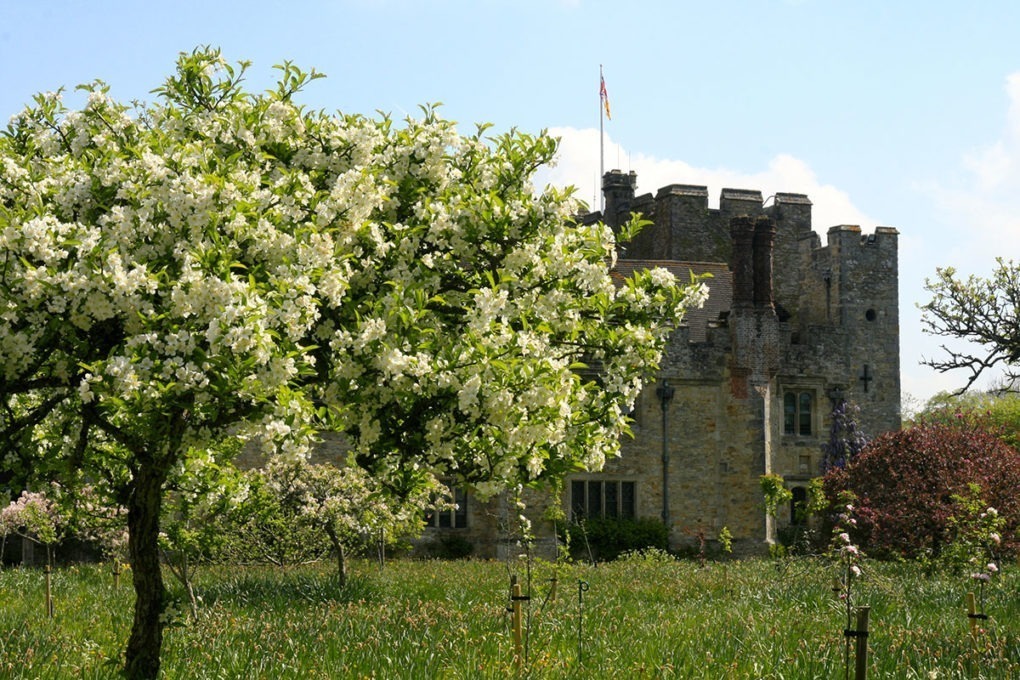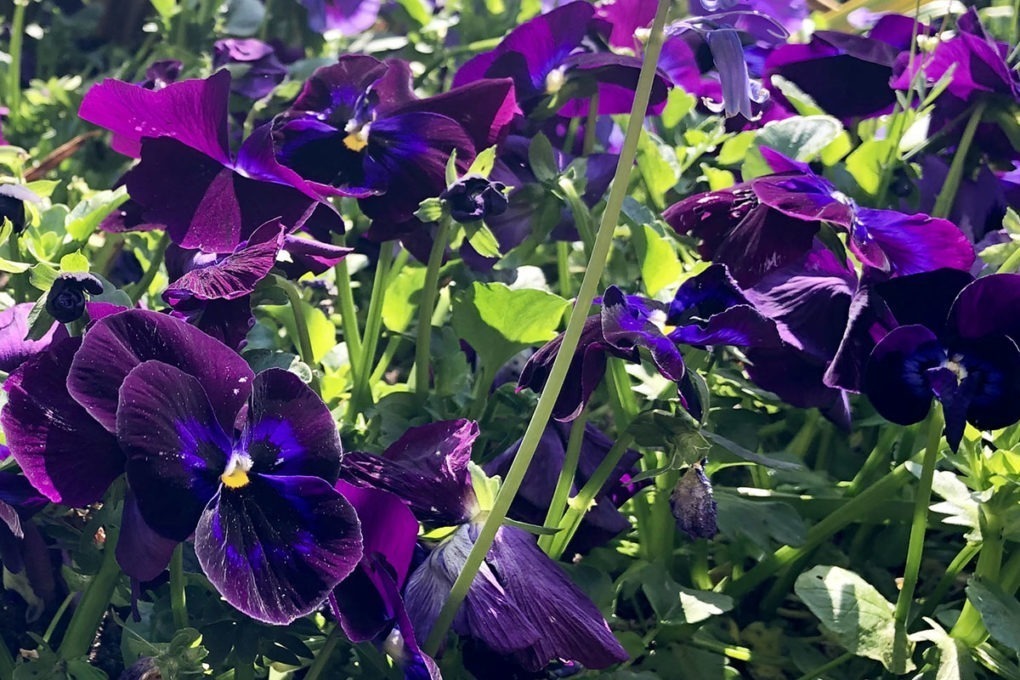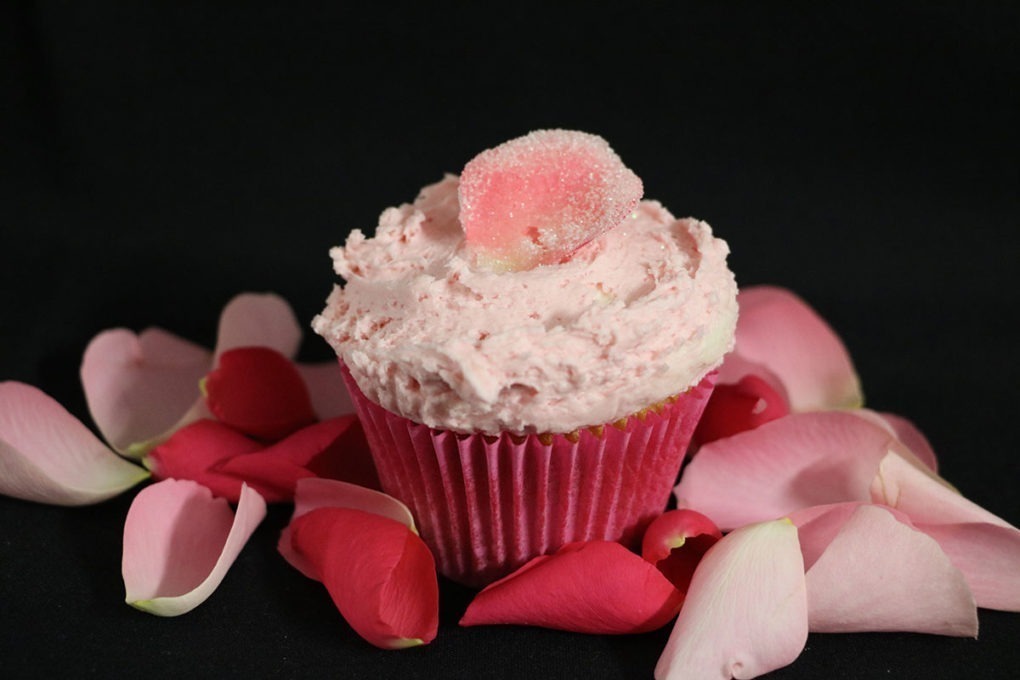

It’s RHS National Gardening Week this week and to celebrate, the horticultural charity is asking gardeners up and down the country to share their love of home-grown produce to highlight this year’s theme: Edible Britain.
Here at Hever Castle we are well known for our ornamental planting, roses, perennials, flowering trees and wonderful colour all year round. However, if you look a little closer in the Italian Garden or in Anne Boleyn’s Orchard, you will find some edible floral delights.
Did you know, for instance, that nasturtiums, sweet peas, borage, chives, marigold, camomile or honeysuckle are all edible?

Edible pansies
Used in garnishes for winter soups, salads and desserts, the perennial pansy is an edible superstar. With a sweet, grassy flavour, the taste is mild – especially if you just stick to the petals. We love pansies in our winter bedding in the Italian Garden – their bright colouring and distinctive markings provide a welcome burst of energy during the dormant months. They seed themselves in cottage gardens and I’ve seen wild garlic and pansies growing together – both of which could be used in a fantastic soup.

Hostas
Ornamental plants in the garden can provide a tasty snack – trust me! We have hostas aplenty on Pergola Walk where the shade of the watery grottos provides the perfect habitat for these edible beauties.
In Japan, the leaves of the hosta plants have been eaten for hundreds of years. ‘Urui’ can be fried, eaten raw or steamed. The flavour is similar to that of asparagus. If you have run out of salad leaves you can always run into the garden and pick young hosta leaves – as long as you haven’t sprinkled the ground with slug pellets or used any chemicals. Be advised though – these wondrous green leaves are toxic to cats and dogs – so don’t let them snack on them.
Lavender
If you’ve ever substitued lavender for rosemary when cooking a leg of lamb then you’ll know that the lavender plant provides fantastic culinary flavour. Belonging to the mint family, the lavender plant is very versatile and the oil from the plant can be used (very sparingly) in cakes and breads. The flowers can provide a subtle ‘citrus’ flavour when used in cake mixes too. Lavandula angustifolia, ‘Munstead’ is a good one and has one of the sweetest fragrances out there.

Roses
As the roses begin to bloom in the garden I often feel quite peckish – this could in part be explained by the the fact that the rose is from the same family as the strawberry and both are edible! Rose petals have been used in many a dish including fruit salads, cakes, biscuits, granola and ice cream.
Don’t forget to collect rose petals in summertime and douse them in icing sugar – they make beautiful cake toppers.
Core! How A-peeling!
Apple blossom is edible too, but I’d rather wait for the fruit from these fantastic trees. I’m sure that the blossom from the ‘Encore’ apple trees in Anne Boleyn’s Orchard would be tasty though, especially given their heritage.
The ‘Encore’ apple was introduced by J Cheal, who designed the gardens for William Waldorf Astor. It was first recorded in 1906 and raised by Charles Ross, Head Gardener at Welford Park in Berkshire.
‘Encore’ is a bright greeny-yellow cooking apple with creamy white flesh, a distinct ribbing and a flattened base. This particular apple variety is known for making a soft baked apple with a rich flavour.
This tasty delight received the RHS Award of Merit and the RHS First Class Certificate in 1908. These apples were also the inspiration behind Hever Castle’s delectable ‘Caramelised Apple Sausage Roll’ last year.
To celebrate RHS National Gardening Week, why not share your edible beauties online with the hashtag #NationalGardeningWeek.
Book your visit to Hever Castle & Gardens.
Within the grounds of the Hever Castle Estate, there are two opportunities for you to stay the night with us.
Hever Castle has played host to many important events and celebrations for over 600 years. In 1903 when William Waldorf Astor set about restoring Hever Castle to its former glory, he added the Astor Wing, to accommodate his family and guests, before creating a lake and the spectacular Italian Garden to house his impressive collection of ancient Greek and Roman statuary.
There are multiple places to eat & drink across the Hever Castle Estate. Select between the Castle & Gardens and Golf Club below to discover more.
Set in the mature grounds of the Hever Castle Estate, Hever Castle Golf Club is a 27 hole Kent golf course that will encourage and inspire all golf enthusiasts.
Set in the mature grounds of the Hever Castle Estate, the Wellbeing Centre consists of five smart treatment rooms.